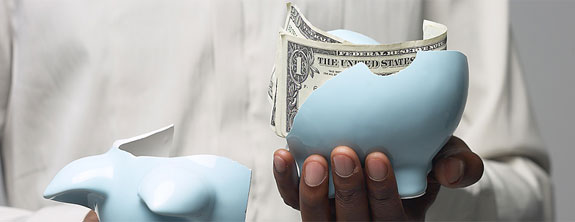
Budgeting. Even the word screams BORING, right?
Well, it’s not the most exciting thing in the world, but it is crucial to hitting your financial goals. If you assign a value to every dollar you bring in in a month (from fixed costs to flux costs to savings), you’ve given yourself a path to success.
So although setting up a budget isn’t overly exciting, hitting your goals is. And you’re much less likely to hit them without a budget.
******************************
Budgeting can be the most important act for anyone looking to get better control of their finances.
With a budget, you establish
- exactly where your money is going
- how much you will be saving each month
- the right amount to spend in certain areas
Thankfully, Yodlee and other account aggregators make it simple to set how much money you want to spend and how much you should expect to spend in each category. And since you have already determined your fixed expenses and once-in-a-while fund, budgeting for these categories is simple.
How to Create a Budget in Yodlee
After you log in to Yodlee, click on “Spending Reports” and then “Set Budget Goals.”
Now you see a page breaking down your expenses by category, with an open form next to each category where you can input your monthly amount.
First, go through and add in all of your fixed costs. Since you know how much they’ll be, you can put in the specific amount it will cost and move on.
Next, scroll down to the “Income” section. Add in your Expected Monthly Income into the Paychecks/Salary field.
After that, go to the “Transfer” section. You’ll use the “Transfer” category as your once-in-a-while fund. Input your monthly set-aside and click “Save Changes.”
Setting Your Flux Spending Goals
In order to budget properly for your flux expenses, let’s take a look at how you’ve been spending in the past.
If you categorized six months of your transactions, Yodlee will actually show your average monthly spending amount for each expense over the last half-year.
If you have fewer months categorized and a number of uncategorized transactions, head over to the “Expense Analysis” page (with the pie chart we saw yesterday) and select the time period you categorized.
Using this as a basis, you have a pretty good idea of how much you spend in each flux category per month.
But instead of making your goal equal to the average you spend in each category, decrease it by 10%. This gives you a goal to reach for to decrease your spending and increase your savings.
You don’t have to fill out every category with a goal – if you don’t have any kids, you wouldn’t budget for Child/Dependent Expenses – but do as many as possible.
Some categories may be covered in your once-in-a-while fund, like Insurance or Taxes, so leave them blank; you’ve already accounted for them in Transfers.
How to Account for Savings
The last, and most important, goal to set in your budget is for savings.
But how can you start on your journey if you don’t know where you’re going?
Tomorrow, we’ll determine what you need to save for and how much it’s going to cost you.
TIP: Sticking to your budget requires a particular mindset; you have to want to stay within the limits you’ve set up. You’re not just making up numbers to try and hit. With every penny you go over your budget, you have one less to save for your real goals.



